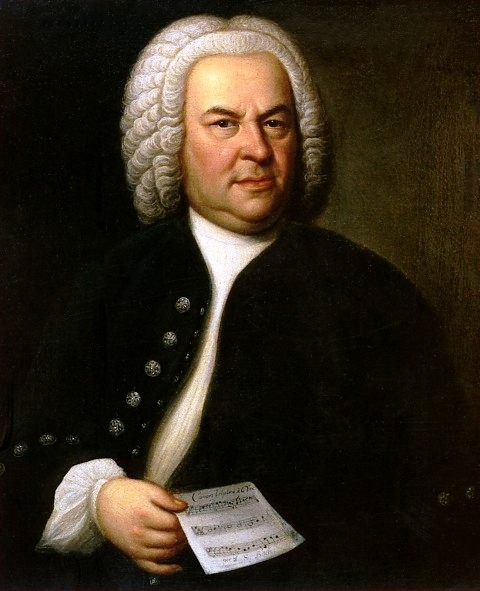Quigley, Seraphic Fire at their finest in Bach’s motets
The six motets of Johann Sebastian Bach represent the Baroque master at his most experimental and inspired. Taking a form pioneered by Monteverdi and Palestrina, Bach pushed the boundaries of form and harmonic structure in these scores, which are far from mere choral vignettes.
Continuing their Bach immersion which began with music from Bach cantatas in collaboration with the Cleveland Orchestra and will culminate in performances of the Easter Oratorio in April, Seraphic Fire presented the motets Friday night in First United Methodist Church in Coral Gables.
These six works were commissions that Bach created for special days or occasions, such as holidays or wedding festivities. Seraphic Fire artistic director Patrick Quigley first programmed these scores in 2006. Fine as those initial performances were, Friday’s presentation was better. Quigley’s current choir is superior, both in terms of individual voices, the singers’ experience and corporate precision..Today he is a much more experienced conductor as well and Bach’s music often brings out the best in Quigley. These performances have the extra stamp of authority and passion that occurs when conductor and repertoire are perfectly matched. Even Quigley’s physical gestures seemed more animated and enlivening.
Lobet den Herrn, alle Heiden (Praise the Lord, all the heathens) is a joyous, celebratory work. The choir’s articulation was immaculate and the female and male voices were agile and well matched in Bach’s ornamental pages. In the slower central section, the continuo of organ, therobo and cello added weight to the reverent liturgical aura. Throughout the concert, the outstanding musicianship of organist Justin Blackwell, cellist Guy Fishman and John Lenti on therobo was strongly evident. The players brought out the minute nuances of Bach’s instrumental writing while blending seamlessly with the voices.
The solemn and grave Komm Jesu, komm (Come Jesus, come) displayed Quigley’s unique ability to make each of the 18 voices clearly audible while achieving a mellow, blended sonority. Fishman’s dark cello tone ably seconded the motet’s austere prayer for an end to life by an ailing and ebbing soul. The choir sounded, by turns, ethereal, buoyant and full voiced in this eloquent score.
In contrast Singet dem Herrn ein neues Lied (Sing to the Lord a new song) is festive. Quigley brought lightness and clipped twists of phrasing to the pulsating rhythms of the opening section. The instrumental contingent was beautifully integrated into the vocal fabric. In the second part, scored for four soloists and choir, the vocal quartet was first-rate. Margot Rood’s high, pure soprano, Margaret Lias’ authoritative mezzo and the firmly placed low notes of John Buffett’s bass all excelled in difficult solos. Brian Giebler’s attractive light tenor provided strength and skilled ensemble voicing. In the intricate final Hallelujah fugue, Quigley’s impetus and the layered, transparent textures of the high women’s voices coalesced in a model of first rate Bach performance.
Opening the program’s second half, Der Geist hilft unsrer Schwachheit auf (The Spirit helps our weakness) proved invigorating. The double choir writing was immeasurably aided by the sanctuary’s acoustic. In the high ceilinged venue, there is space for the sound to flow and make an impact which is well-nigh ideal for Bach’s choral works. The quintessential Seraphic ensemble sound and discipline were at their zenith in the final chorale for a performance in the most uplifting modern Baroque manner.
Fürchte dich nicht, ich bin hei dir (Do not fear, I am with you) is the least performed of the motets and the most strikingly original. Quigley called this chromatic fantasy “the hardest thing I have ever done.” Starting in A Major, the score traverses every key with a display of chromatic writing that would not be heard again until the nineteenth century. This is harmonically adventurous and disturbing music, and the choir’s precise intonation and acute response were all the more impressive for the music’s complexity.
Jesu, meine Freude (Jesus, my joy) is the most extended of these scores. A chorale of unusually long melodic span is followed by a set of variations. Varying in meter and mood from lively to serious and contemplative, this large scale work was led with intense feeling by Quigley. Here variations of dynamics were most clearly focused. In one section, the female voices sing an entirely different chorale as the top layer to the male’s voices variant on the main melody. The effect was aurally stunning.
Seraphic Fire’s reading of the motets was another of the group’s top offerings and the coming Easter Oratorio can only be looked forward to with the greatest anticipation.
Seraphic Fire repeats the Bach motets 7:30 p.m. Saturday at All Saints Episcopal Church in Ft. Lauderdale and 4 p.m. Sunday at Vanderbilt Presbyterian Church in Naples.
Seraphic Fire presents Bach’s Easter Oratorio 7:30 p.m. April 13 at First United Methodist Church in Coral Gables and 7;30 p.m. April 14 at All Saints Episcopal Church in Ft. Lauderdale. seraphicfire.org
Posted in Performances, Uncategorized
Leave a Comment
Sat Feb 18, 2017
at 12:42 pm
No Comments
